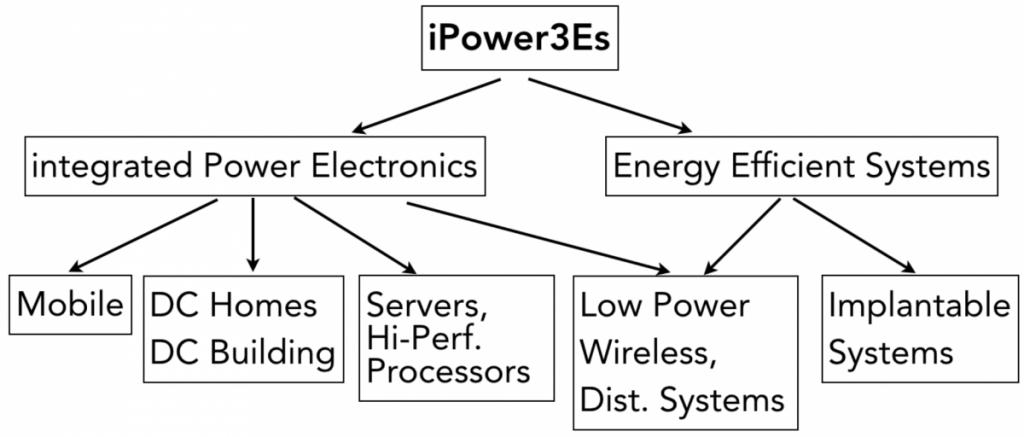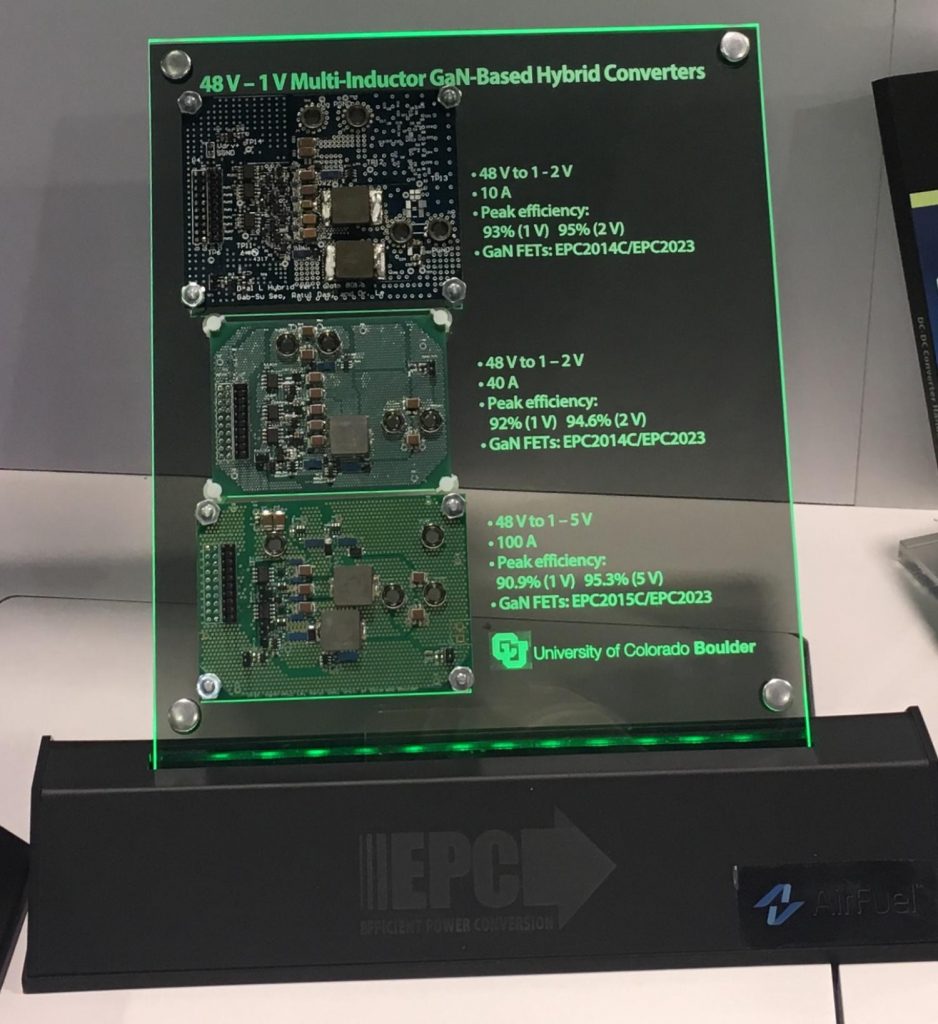The research focus in the integrated Power Electronics and Energy-Efficient Systems (iPower3Es) Lab at UC San Diego is at the boundary between and deep into the two areas: integrated circuits and power electronics. The group’s goal is to create miniaturized/integrated circuit designs and power management systems that achieve optimal trade-offs among size, performance, and efficiency.
Applications of interest include various electronic devices and systems from low power to high power, smartphones to data centers, battery-powered components to renewable- and grid-power devices, and from stationary systems to robots, automotive devices, and aircraft.

Integrated Power Electronics
Smart Integrated Power Delivery
As mobile devices such as smartphones, wearable devices, and tablet computers have been widespread and their complexity has been steadily increased for more functionalities in limited space, there is clear need for more efficient integrated regulators that can charge battery and supply power to mobile devices with high efficiency.
Aiming at a breakthrough, we are researching a way to utilize parasitic components that are readily available around the power supply for power conversion. By leveraging rather than suppressing their effect, we expect to not only simplify the circuit structure but also enable the system to achieve higher energy efficiency. Our solution would contribute to giving better user experience by relieving thermal issues during charging.
People: Casey Hardy and Prof. Hanh-Phuc Le

A 10.9W 93.4%-Efficient (27W 97%-Efficient) Flying-Inductor Hybrid DC-DC Converter Suitable for 1-Cell (2-Cell) Battery Charging Applications
Power Converter for Large Conversion Ratios and High Output Current Density
The growing market demands for cloud computing and storage are driving up the energy consumption and physical footprints of the data centers that host these services. The catalysts for this growth can be found in applications such as “big data” processing, streaming media services, and enterprise software just to name a few. Not only does this increase in demand have substantial impacts on a data center’s fixed energy costs but it can also have profound environmental implications on a global scale.
In this project, we seek to address these challenges by developing hybrid circuit architectures that merge switched capacitor and inductor techniques to achieve high voltage conversion ratios, high current density, and high power conversion efficiencies.
People: Ratul Das, Roger Xie, and Prof. Hanh-Phuc Le

– Ratul’s and Roger’s MIH converter boards featured by EPC at APEC 2019 Exhibition
Energy-Efficient Systems
Efficient Power Delivery and Management for Soft Robots
Intelligent mechanical/electrical devices, i.e. robots, have been increasingly more integrated with human life, making revolutionary changes in our productivity at an unprecedented rate. Among many types of robots, soft robots are becoming more important with more direct connections to humans and nature, requiring soft, versatile, lightweight, and compact materials to conform to their environment.
A key challenge in adopting these soft robots in practice lies in the electronics to support them. Particularly, many soft robots require a modular, miniaturized power supply and management unit that has unique charactersitics and require extremely challenging performances.
This research direction focuses on addressing these challenges.
People: Roger Xie, Tirtho Lodh, and Prof. Hanh-Phuc Le

(only for illustration)
